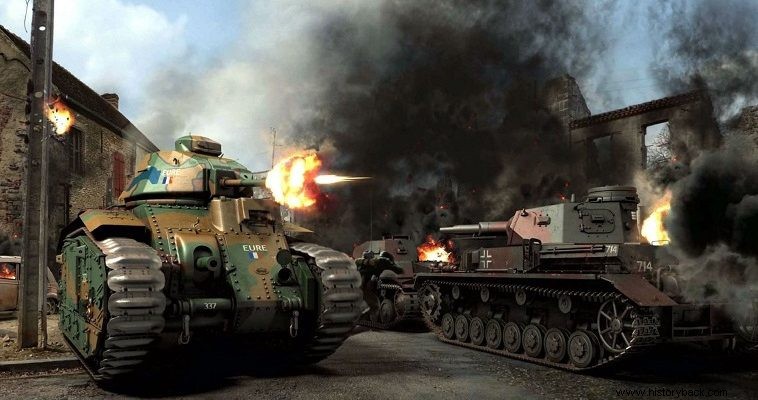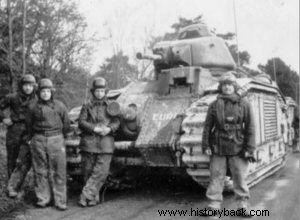
At 05.00 on 16 May 1940 a company of the 8th Panzer Regiment (SPA) was ambushed in a rubble-strewn street in the French village of Stonne. The previous year the village had changed hands several times as the French troops tried to hold back the wave of German Panzers.
The artillery of the two opponents and the Stukas reduced the village to ruins. That morning the island's German Pz III Ausf E and Pz IV Ausf D prepared to meet the expected French counterattack. Suddenly a French chariot appeared. It was a Char B1 bis named "Eure" and crew chief Captain Pierre Bigot.
Driver and gunner Sergeant Durup fired the 75 mm gun. on the boat and immediately the German Pz III in the "tail" of the German phalanx, disappeared... At the same time, Bigot hit with the 47 mm cannon. of the tower the advancing German tank.
The German nation was trapped. Although the distance between the French tank and the German was of the order of 30m. the shells of the 37 mm guns. of Pz IIIs failed to penetrate the strong armor of the French tank. But neither the projectiles from the short-barreled 75 mm guns. of Pz IVs succeeded. The French tank received at least 140 hits, but none penetrated its strong armor. On the contrary, Bigot destroyed one puncher after another.
Having destroyed an entire German field of 11 Pz III and two Pz IV tanks, the French tank also destroyed two German 37 mm anti-tank guns. Another French tank attacked and drove the following German 64th Chasseur Regiment to flight. The village of Ston remained under French control. It was only on May 19 that the French were forced to leave the village.
It was the first time German tanks faced an opponent they could not defeat. Although France was crushed in 1940 by German panzers, it nevertheless excelled both quantitatively and qualitatively of Germany in tanks.
And the Char B1 bis was really invincible among the German tanks of the time. It had a 75 mm heavy gun. of 17.1 calibers on the forward starboard part of the ship and one machine gun and one 47 mm cannon. in the tower along with a conjugate machine gun. It had a maximum armor thickness of 60 mm. and only the famous German 88 mm anti-aircraft gun. he could stop it. The main disadvantage of the French tank was its low speed (25 km/h on the road) and its limited autonomy.
At least 369 B1 bis were built. When war was declared on 1 September 1939 the French army had only four divisions with a total of 122 tanks. Later the number of chariots increased. The tanks joined the three and later four French Reserve Armored Divisions (DCR) while some were allocated to infantry support alongside older types.
The 28th Division against Rommel
Most tanks of the type were not destroyed by the Germans but were abandoned by their crews mainly due to lack of fuel. Indicative of this was a clash on 15 May when 62 B1 bis and 80 H39s of the French 1st DCR faced 546 German tanks of the 5th and 7th Panzer Divisions (MPa). With the division's fuel reserves destroyed by the Stukas, only 26 B1 bis of the 28th Panzer Division found themselves facing Rommel's entire 7th Army.
In the first attack the French tanks destroyed the panzers. One tank destroyed seven German, another another six and the rest an average of three! In contrast only one B1 bis was destroyed and one was damaged. Rommel again attacked flanking a point where there were only three French tanks immobilized by lack of fuel. Each French tank was matched by at least 10 German tanks. But again the attack was repelled.
Rommel requested artillery and Stuka support to break the Gordian Link. But the battle continued. Around noon, five B1 bis of the 37th Division also arrived in the area. The other tanks of the command had run out of fuel. These tanks destroyed 15 German. But three B1 bis.
were also lostMany French tanks were destroyed by fire from the German 88 mm guns. and 105 mm guns. who fired directly, but not before inflicting heavy casualties on the Germans, destroying eight of the famous 88s. So it was not German tank superiority that brought about the collapse of the French army in 1940, it was the brains of its generals.

